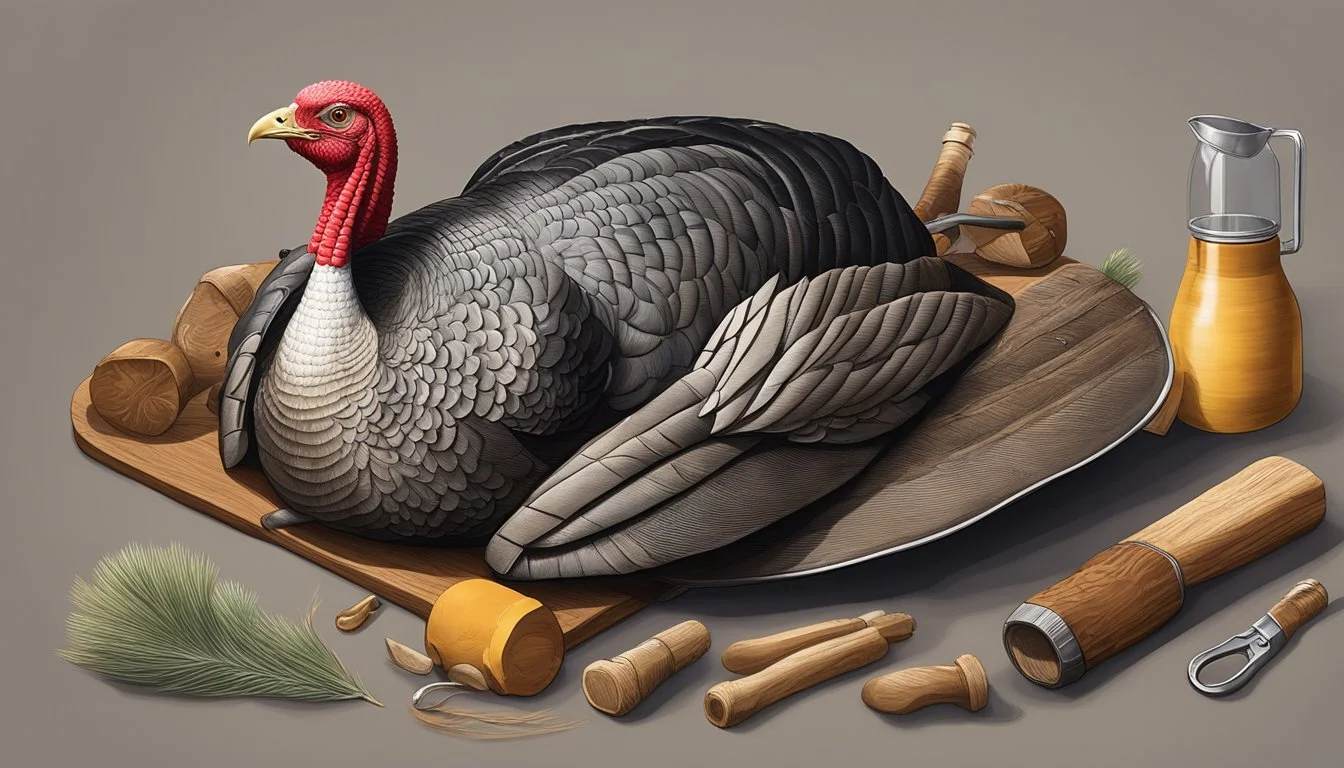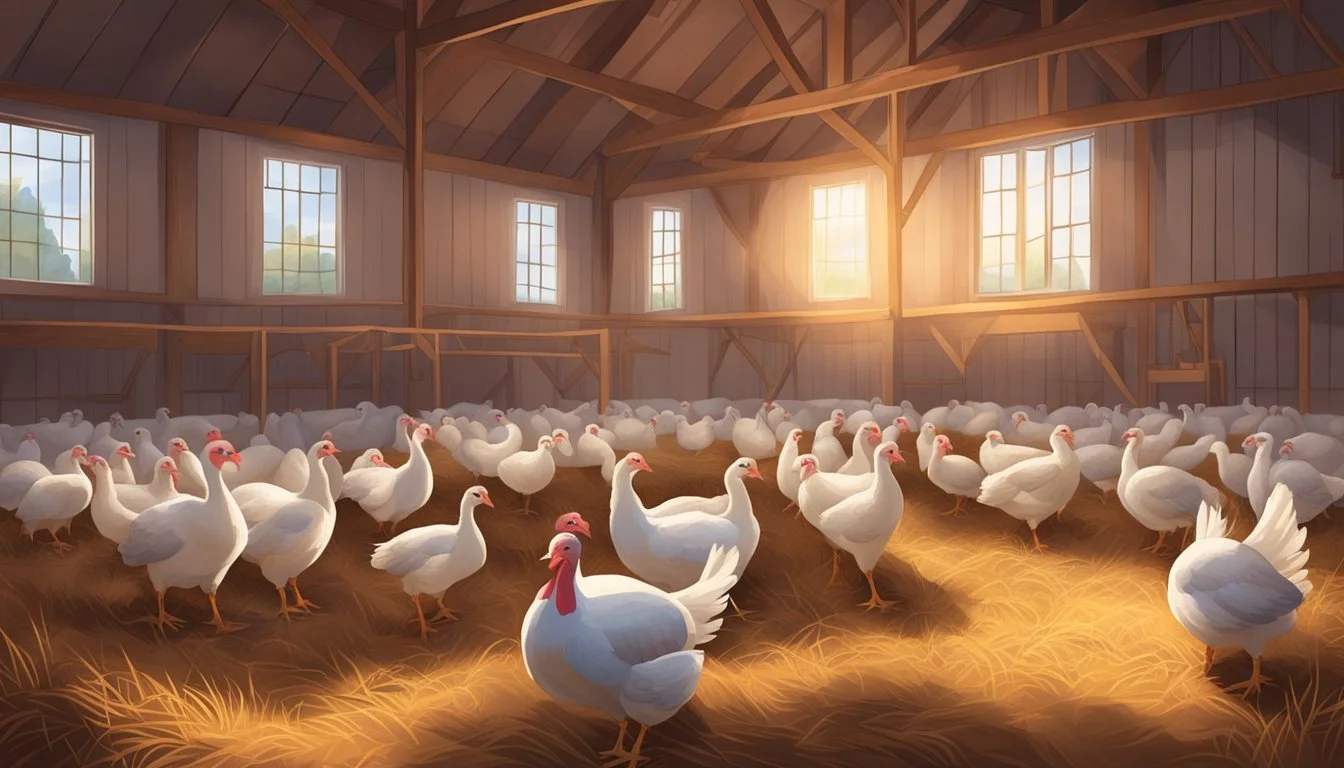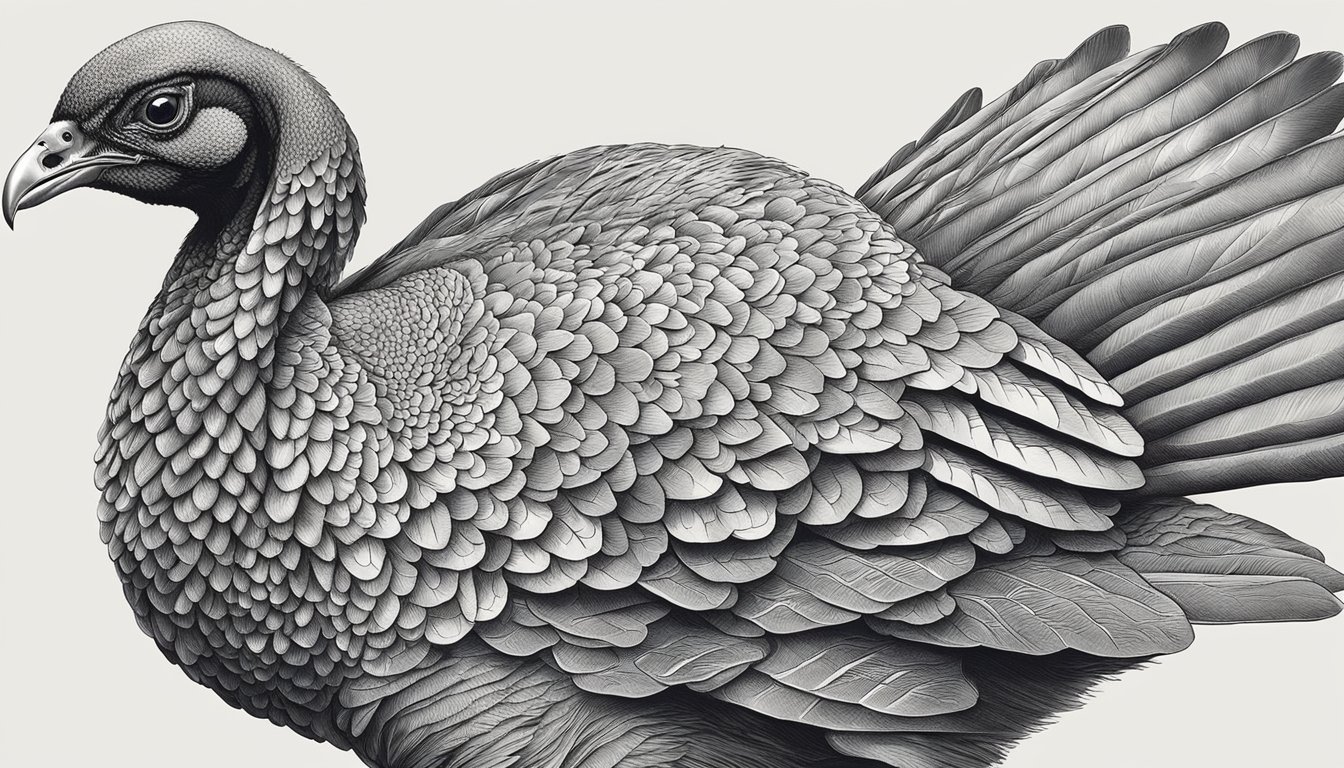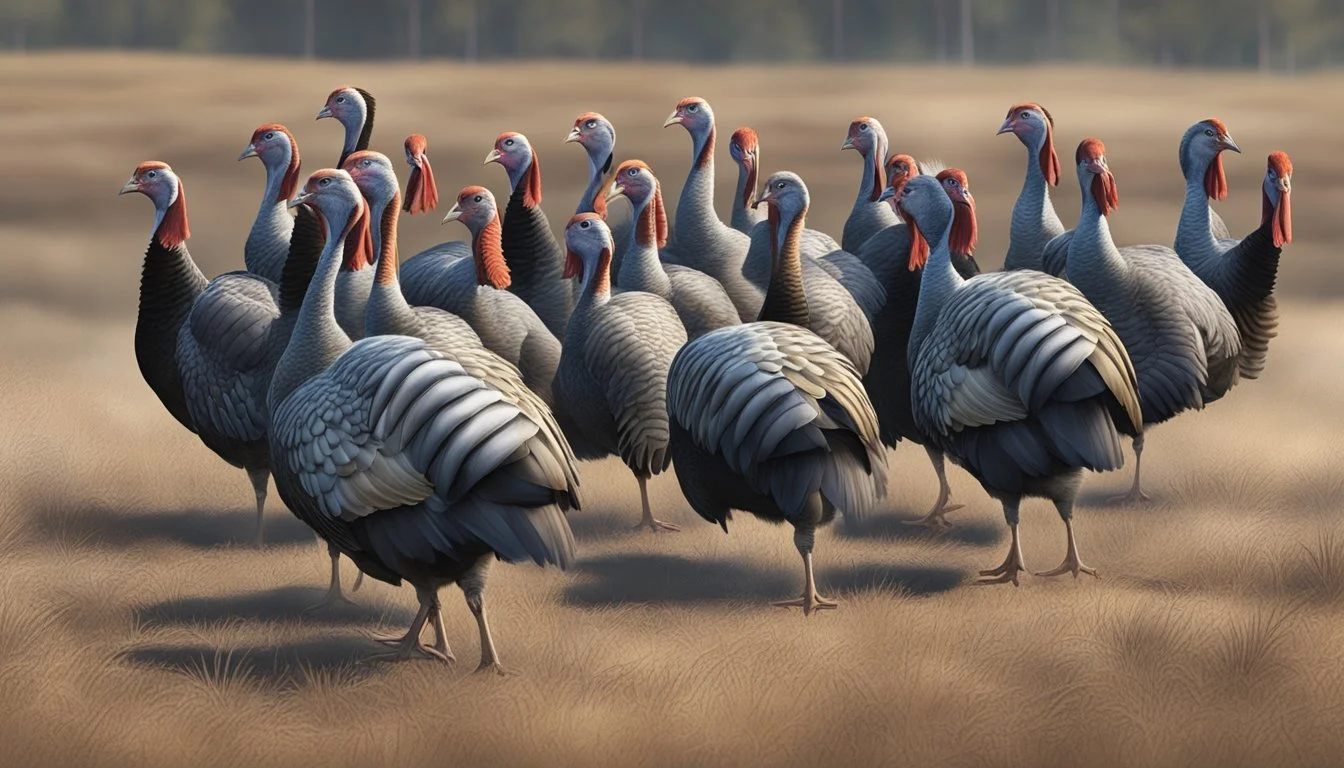The Ultimate Guide to Turkey Saddles
Key Strategies for Breeder Safety and Comfort
Breeding turkeys is a practice that requires not only a good understanding of the birds' behavior and needs but also the right equipment to ensure their well-being. One such indispensable tool within the turkey breeder's arsenal is the turkey saddle. These specialized protective garments are designed to shield a hen's back from potential injury during mating. With overzealous toms prone to causing harm, a turkey saddle becomes essential for maintaining the health of the hen while allowing for the natural breeding process to occur.
A turkey saddle, often constructed from durable materials, is placed over the back of the hen, acting as a barrier between her feathers and the tom's spurs during mating. This not only prevents feather loss and skin abrasions but also minimizes stress for the hen, contributing to a safer and more productive breeding environment. Correct sizing and fitting are crucial for the saddle to provide protection without impeding the turkey's movement or causing discomfort.
Attention to the physical condition of hens is a key aspect of successful turkey breeding. Adequate protection, including the use of turkey saddles in smaller breeding groups, ensures that the hens remain healthy throughout the breeding season. This, in turn, supports the overall sustainability and productivity of turkey flocks, whether they are raised in a backyard or a larger-scale farming operation.
Understanding Turkey Saddles
In the realm of poultry breeding, turkey saddles are essential accessories designed to protect turkeys during mating. These garments shield the hen's back from injuries and feather damage that often occur due to the tom's weight and mating behavior.
Purpose and Benefits
Turkey saddles serve as protective gear for hens during the mating season. They are strategically designed to:
Protect hens' backs from scratches and wounds caused by toms' claws and weight.
Preserve feathers, maintaining the health and visual appeal of hens.
Enhance overall health, preventing infections and promoting a stress-free mating process.
Different Types and Materials
Turkey saddles are available in various styles and materials to suit different needs:
Fabrics: Common materials include sturdy cotton, denim, and canvas for durability.
Design: Some saddles cover just the back, while others include wing protectors.
Fastening Mechanisms: Velcro or elastic straps help in keeping the saddle securely in place.
Materials Comparison:
Cotton: Durability - Moderate, Comfort - High, Maintenance - Easy
Denim: Durability - High, Comfort - Moderate, Maintenance - Requires more effort
Canvas: Durability - Very High, Comfort - Low, Maintenance - Difficult
Saddle Sizing and Fit
A proper fit is crucial for the effectiveness and comfort of turkey saddles:
Measurements: Hens' backs should be measured accurately to ensure a snug fit.
Adjustable: Many saddles have adjustable features to accommodate hens of various sizes and shapes.
No Restriction: The saddle should allow for normal movement without causing discomfort.
It is imperative to regularly check the fit of the saddles, especially as the turkeys grow or during different phases of the mating season, to ensure continued protection and comfort.
Setting Up Your Turkey Environment
Properly setting up the environment for turkeys is critical for their protection, especially during breeding. From safe pens to optimal bedding, temperature control, and ample space, each component contributes to the well-being of these birds.
Creating a Safe Pen
For turkey protection, constructing a pen is the first line of defense against predators. One should ensure the enclosure is surrounded by sturdy fencing, buried at least a foot beneath the ground to deter digging pests like foxes and raccoons. Roofs or secured netting will guard against aerial threats. The shelter within the pen must be robust to withstand weather conditions and provide refuge.
Choosing the Right Bedding
The bedding within the pen plays a vital role in maintaining turkey health. Pine shavings are recommended for their absorbency and ease of cleaning. Bedding should be kept dry and fresh at all times to prevent disease and parasites, necessitating regular checks and changes.
Temperature and Ventilation
Maintaining a consistent temperature between 70 and 75 degrees Fahrenheit ensures comfort and reduces stress in turkeys. Proper ventilation is equally important, as it prevents respiratory issues and the buildup of harmful gases. Vents should be adjustable to account for changing weather conditions, while ensuring the birds are protected from drafts.
Space Requirements
Turkeys need more space than many other poultry birds to thrive, especially when breeding. They require at least 20 square feet of outdoor space per bird to exhibit natural behaviors without overcrowding. Indoor space should also be generous, with roosting areas allowing free movement and comfortable resting spots.
Indoor Space: Provide a minimum of 6-8 square feet per turkey.
Outdoor Space: Aim for at least 20 square feet per turkey.
Implementing the above advice provides an optimal environment, offering protection and comfort for breeding turkeys.
The Breeding Process
Breeding turkeys requires meticulous attention to select strong genetic traits, observe and manage mating behavior, ensure optimal incubation conditions, and provide increasingly independent care for young turkey poults.
Selecting Breeding Turkeys
Selecting breeding turkeys involves looking for healthy individuals with desirable characteristics. Heritage breeds are often chosen for their genetic vigor and the ability to thrive in diverse environments. Breeders should prioritize health and vitality by examining physical attributes and past progeny performance.
Mating Season and Behavior
Mating season for turkeys typically involves the creation of breeding flocks. Male turkeys, or toms, display to attract females and establish their dominance. During this period, mating behavior is closely monitored to prevent injuries, and turkey saddles may be used to protect hens from harm.
Incubation Practices
Turkey incubation is a critical step in the breeding process. Turkey eggs should be incubated at precisely 100.5 degrees Fahrenheit for about 28 days. Using a reliable incubator can help ensure the stability of the temperature, and it is recommended to only set the number of eggs that can be managed without overcrowding.
Caring for Turkey Poults
Once hatched, turkey poults require a brooder set at 95 to 100 degrees Fahrenheit to maintain their health. Breeders should ensure that clean feeders and waterers are provided. As poults grow, the temperature is gradually reduced, and they are introduced to more space and environmental enrichment to encourage natural behavior.
Feeding and Nutrition
Proper nutrition lays the foundation for healthy breeding turkeys by directly impacting their growth, health, and reproductive capabilities. A balanced diet and clean water are essential to prevent malnutrition and ensure the birds have the strength and immunity needed for breeding.
Choosing the Right Feed
Feed is the cornerstone of turkey nutrition. Breeders typically start poults on a turkey starter feed, which is high in protein to support rapid growth. Protein content should be roughly 28% for starter feeds. As turkeys mature, their dietary requirements change; breeders should switch to a feed with suitable protein levels, typically around 16% for adult birds. The primary ingredients in commercial turkey feeds are often corn and soybean meal, which provide both protein and energy.
Starter feed (0-6 weeks): 28% protein
Grower feed (6-14 weeks): around 20% protein
Finisher feed (14 weeks to market or breeding age): around 16% protein
Importance of Water
Turkeys require access to clean, fresh water at all times. Water consumption is likely to increase during hot weather or when the diet's salt content is high, so it is crucial to monitor and replenish water supplies regularly to prevent dehydration, which can lead to health issues and affect breeding efficiency.
Nutritional Supplements
To complement their feed, turkeys may sometimes require additional nutritional supplements:
Vitamins: Essential for immune health and metabolic processes.
Electrolytes: Especially important during periods of stress or heat to maintain hydration and energy levels.
Grit: Aids in digestion and is especially important if feeding a diet including whole grains or foraging is encouraged.
Breeders should consistently monitor turkeys for signs of nutritional deficiencies and adjust their diet accordingly to maintain optimal health and productivity.
Health and Well-Being
Protecting the health and well-being of breeding turkeys is paramount. Proper use of turkey saddles can play a significant role in preventing injuries and reducing stress, thereby promoting overall well-being.
Common Diseases and Prevention
Breeding turkeys are vulnerable to various diseases such as fowl pox, blackhead disease, and avian influenza. Ensuring that turkeys are vaccinated against common diseases is critical. Regular health check-ups and maintaining clean living conditions are effective strategies for disease prevention.
Vaccination: It's essential to follow a strict vaccination schedule.
Sanitation: Implementing thorough cleaning protocols can prevent the spread of diseases.
Stress Management
Breeding turkeys can experience stress from environmental factors and the presence of predators. Stress management is crucial as it affects their immune system and breeding capabilities.
Environment: Provide a calm and comfortable habitat.
Predator Control: Utilize fencing and secure housing to protect turkeys from predators.
Saddle Impact on Well-Being
Turkey saddles are designed to protect the bird's back from injuries and bruising during mating, which can also help reduce stress. The use of saddles must ensure:
Proper Fitting: Saddles should fit snugly without restricting movement.
Material: Opt for breathable materials to prevent overheating and discomfort.
Rearing and Flock Management
Raising turkeys requires careful attention to brooding practices, understanding the flock's social hierarchy, and effectively managing free-range environments to ensure turkey welfare.
The Role of Brooding
During the initial stage of turkey rearing, brooding is critical. Turkey poults cannot regulate their body temperature for the first 10 days of life; thus, providing a heat source is essential. The brooding area needs to maintain a temperature of 100°F at the poult level, reducing by 5°F weekly until they can regulate their temperature.
Flock Dynamics and Social Structure
A turkey flock exhibits a distinct social structure with a pecking order that influences feeding, roosting, and breeding behaviors. Management must allow for this pecking order while ensuring weaker or less dominant birds have access to resources. Minimizing stress through adequate space and enrichment is crucial for the flock's overall health.
Managing a Free-Range Flock
Free-range turkey management aligns well with sustainable and homestead farming practices, allowing turkeys to exhibit natural behaviors. Providing secure fencing and overhead netting protects the flock from predators. Free-range turkeys require consistent access to nutritionally balanced feed and clean water, alongside periodic checks to monitor health and well-being.
Infrastructure and Equipment
When setting up infrastructure for turkey breeding, the key focus areas are the coop and run design, appropriately-sized nesting boxes and roosting areas, and a reliable feeder and waterer setup. All components should ensure protection, ease of access, and maintenance.
Coop and Run Design
The turkey coop must provide ample space for movement and comfort, allowing for at least 6 square feet per turkey to prevent stress and injuries. It should include proper ventilation while maintaining protection from harsh weather conditions. The attached run should also be spacious, fortified with predator-proof fencing, and include some overhead cover to safeguard the turkeys from aerial predators and harsh weather.
Nesting Boxes and Roosting Areas
Nesting boxes must be strategically placed, ensuring they are private and dark to encourage laying, while also being easily accessible for egg collection. Each nesting box should roughly measure 18"x18"x18" to accommodate the larger size of turkeys. Proper roosting areas should feature sturdy perches that can hold a turkey's weight and are positioned at various heights, as turkeys naturally prefer to roost off the ground.
Feeder and Waterer Setup
Feeders and waterers should be designed to minimize waste and contamination. Turkey feeders typically need to be larger and sturdier than chicken feeders:
Feeders: 30 pounds of feed per adult turkey is a good starting point for sizing.
Waterers: Ample and clean water supply is crucial, with at least one waterer for every 10 turkeys to avoid crowding.
Durable materials like galvanized steel help ensure longevity and ease of cleaning. The placement of feeders and waterers should facilitate easy access for the turkeys while discouraging perching to avoid fecal contamination.
Protecting From Predators
When it comes to breeding turkeys, providing robust protection against predators is crucial. Effective measures ensure the safety and security of the flock, maintaining a productive and stress-free breeding environment.
Fencing and Security Measures
Fencing is the first line of defense against predators. It should be sturdy and high enough to prevent entry from climbing animals, with the base buried in the ground to deter digging predators. A combination of solid fencing and wire mesh can offer substantial protection. Additionally, the use of electric fencing can enhance security, delivering a safeguard against a wide range of predatory animals.
Understanding Predator Behavior
Understanding the behavior of predators is key to effective protection. Most predators are opportunistic, seeking food and shelter. By eliminating these opportunities, their presence can be significantly minimized. Regularly inspecting the habitat for potential predator access points and promptly addressing these vulnerabilities is vital. Keeping the surrounding area clear of tall grasses and debris can also reduce the likelihood of predators nesting near the turkey habitat.
Cultural and Ethical Considerations
When discussing turkey saddles, cultural significance and ethical rearing practices become essential, especially in the context of heritage turkeys and Thanksgiving traditions.
The Heritage Turkey Movement
Heritage turkeys are traditional breeds that were present in America before industrial farming became prevalent. The movement advocates for preserving these genetic lines because of their historical significance and sustainable qualities. Advocates argue that heritage breeds often require more natural rearing environments and may benefit from turkey saddles to protect them during breeding, linking cultural preservation with animal welfare.
Heritage Breeds: Notable for their slower growth and longer lifespans.
Thanksgiving: Heritage turkeys are sought after for holiday feasts, valued for flavor and tradition.
Ethics of Turkey Rearing
Ethical turkey rearing practices are critical to ensuring the welfare of turkeys, which is something consumers are increasingly concerned about. Ethical considerations typically include the birds' living conditions, breeding practices, and overall health. Turkey saddles play a role in ethical breeding by preventing injury to hens from mating toms, which reflects a commitment to animal welfare.
Sustainable Practices: Emphasize the need for environmentally friendly and humane farming methods.
Ethical Treatment: Turkey saddles are a tool in the protection of breeding hens, showcasing an investment in ethical rearing.









